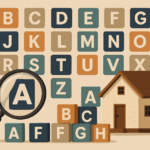
Key takeaways
Melbourne’s property market is increasingly split:
*Inner-city, blue-chip suburbs like Boroondara and Stonnington-West are pricing out many buyers.
*In these areas, the gap between buyer budgets and asking prices exceeds $900,000.
Meanwhile, outer northern and western suburbs are more in sync with buyer expectations—some even show budgets exceeding asking prices.
Buyers are embracing medium-density living, especially if it’s well-located and affordable.
The “Great Australian Dream” of a detached home on a quarter-acre block is giving way to townhouses and larger apartments close to infrastructure.
Unless supply evolves to match these trends, housing affordability pressures will intensify, especially for younger Australians and downsizers.
Melbourne’s property market has always been a tale of two cities, but new research from Domain shows the divide is deepening, and it’s being driven by a sharp mismatch between buyer budgets and what’s actually available for sale.
Domain’s latest report, Matching Demand: Exploring Buyer Preferences v Market Supply, has revealed that in some of Melbourne’s most desirable inner-city suburbs, buyer expectations are falling almost $1 million short of current asking prices.
Yes, you read that right, nearly a million dollars.
In suburbs like Boroondara and Stonnington-West, the median gap between what buyers are hoping to spend and what sellers are asking has blown out to over $900,000.
In contrast, in Melbourne’s north and west, where affordability is more aligned with budgets, we’re seeing either a much smaller gap or even buyers with more money to spend than the average asking price.
A structural affordability problem
According to Domain’s Chief of Research and Economics, Dr. Nicola Powell, this data highlights more than just affordability challenges; it reflects a fundamental mismatch between the type of housing people want and where it’s being built.
She further said:
“We’re seeing sustained demand for well-located, medium and high-density housing like townhouses, apartments, and mixed-use developments within 20 kilometres of the CBD, as well as increased interest in outer suburban areas and growth corridors.
These trends highlight a pressing need for more diverse, affordable housing options.
For developers and urban planners, understanding these shifting buyer preferences is essential to delivering liveable, future-ready communities that align with where and how people want to live.”
This is where the rubber hits the road: buyers are gravitating toward townhouses and units in inner and middle Melbourne, but the supply of these types of dwellings isn’t keeping pace, especially at the price points buyers can afford.
What the numbers tell us
Within 10km of the Melbourne CBD, the average buyer is hoping to spend around $1.2 million for a house.
But the median asking price sits at $1.51 million, leaving a yawning $310,000 affordability gap.
And the situation only worsens in blue-chip areas like Boroondara, where the shortfall is almost $1 million.
Interestingly, in the outer suburbs, particularly beyond 30km from the city, the script flips.
Buyer budgets are exceeding listing prices by up to $83,000.
Table 1. The price difference between seller and buyer expectations (listing price v searched price).
| < 10km | 10-20km | 20-30km | 30-40km | 40km+ | |
| House - Listing Price | $1,510,000 | $922,000 | $717,000 | $750,000 | $798,000 |
| House - Searched Price | $1,200,000 | $900,000 | $800,000 | $750,000 | $850,000 |
| House - Price Difference | $310,000 | $22,000 | -$83,000 | $0 | -$52,000 |
| Townhouse - Listing Price | $998,000 | $910,000 | $660,000 | $650,000 | $619,000 |
| Townhouse - Searched Price | $800,000 | $750,000 | $650,000 | $650,000 | $700,000 |
| Townhouse - Price Difference | $198,000 | $160,000 | $10,000 | $0 | -$81,000 |
| Unit - Listing Price | $608,000 | $590,000 | $560,000 | $550,000 | $545,000 |
| Unit - Searched Price | $600,000 | $600,000 | $550,000 | $550,000 | $600,000 |
| Unit - Price Difference | $8,000 | -$10,000 | $10,000 | $0 | -$55,000 |
This suggests these areas may be undervalued, or perhaps that buyers are willing to pay more for family homes, but supply isn’t matching their needs in terms of size, quality, or location.
The middle ring is also feeling the squeeze.
Buyers are falling short by as much as $198,000 for townhouses, particularly within the 10–20km zone.
Townhouses are increasingly appealing to downsizers, young families, and investors alike, but they remain in critically short supply in the most in-demand locations.
Units are faring slightly better.
In many areas, particularly in the outer suburbs, listing prices for units are coming in under buyer budgets, sometimes by as much as $55,000, which may reflect an opportunity for astute investors or first-home buyers willing to consider a compromise on space or location.
The implications for developers, investors and policymakers
This research reinforces what we’ve been saying for some time now: Australia’s property market isn’t suffering from a lack of demand; it’s suffering from the wrong type of supply in the wrong locations.
Buyers are actively searching for medium-density living options in inner and middle suburbs, close to jobs, schools, and transport, but they’re being priced out.
Meanwhile, outer suburbs are showing signs of pent-up demand, particularly for quality, family-sized dwellings.
For developers, the signal is clear.
The market is hungry for townhouses and larger units, but only if they’re delivered at price points that match real-world buyer budgets.
And for policymakers, it’s yet another call to fast-track planning reform and incentivise urban infill development.
If we’re serious about solving the housing affordability crisis, we need to stop measuring success in the number of dwellings built and start focusing on the right types of dwellings, in the right locations, at the right prices.
Final thoughts
The Melbourne property market is evolving and buyers are adapting to affordability constraints.
On the other hand those already holding Melbourne real estate are getting rich as the value of their properties keeping increasing, while for many the rising cost of living is creating financial struggles.
This means there will be more tenants in the future. But there will be 2 types of tenants
-
Lifestyle tenants
-
Tenants who are low income earners - 1-2 weeks away from being broke. They won’t be able to sustain rental increase. Don’t buy properties where your tenants are 1-2 weeks away from being broke.
My advice is not to invest in the lower socio economic regions of Melbourne where people can’t afford to pay more for each others property.
Yet many investors like to buy cheap - WRONG!
Instead I'd be buying in Melbourne's aspirational and gentrifying suburbs.
I believe we’re in a window of opportunity for property investors who take a long-term view.
Right now, we’re seeing what some would call a “perfect storm” of fundamentals that are aligning to support strong property markets in the years ahead:
- Continued rapid population growth is putting pressure on housing.
- An acute undersupply of dwellings,
- A chronic shortage of skilled labour, making new development slower and more expensive.
- Inflation has moderated, now sitting within the RBA’s target range.
- Interest rates will keep falling – bringing more buyers into the market
- Government first homebuyer incentives will pour fuel on the flames of our undersupplied housing market.
As interest rates keep falling and confidence returns among both buyers and sellers, we’ll enter the next phase of the property cycle.
And historically, this stage has delivered some of the best capital growth for those who act early.
But what about you?
Are you clear on how to take advantage of these market conditions — or are you still waiting for "certainty"?
That’s where our Complimentary Wealth Discovery Session comes in. We’re offering you a 1-on-1 chat with a Metropole Wealth Strategist to help you:
- Clarify your financial goals
- Understand how macro trends affect your position
- Build a personalised, data-driven property strategy
- Get ahead of the curve — before everyone else piles in
There’s no cost, no obligation — just practical, tailored guidance based on decades of experience.
Click here now to book your free Wealth Discovery Session














